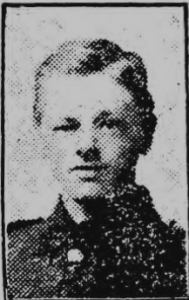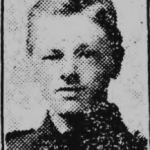
BORN HULL 19/02/1896. SON OF MARY ANNIE ILLINGWORTH, AT 6 LILY’S TERRACE, FINSBURY STREET, HULL. EDUCATED AT BLUNDELL STREET SCHOOL. EMPLOYED BY A PORK BUTCHER. HE ENLISTED IN THE HULL COMMERCIALS, ON 06/09/1914. SERVED WITH THE 10TH EAST YORKSHIRE REGIMENT, IN FRANCE, FROM 15/04/1916. KILLED IN ACTION, AT POLYGON WOOD, ON 26/09/1917, AGED 21. HE WAS SHOT IN THE THROAT BY A SNIPER, RESCUING SIGNALLER, E.W. MITCHELL, A WOUNDED COMRADE. HIS COMMANDING OFFICER, WROTE, “HE WAS A BRAVE SOLDIER AND DIED GALLANTLY WHILST ATTACKING A HUN BLOCK HOUSE ” HE WAS UNMARRIED. HIS FATHER SERVED IN THE ARMY SERVICE CORPS. HIS STEP BROTHER SERVED IN THE EAST YORKSHIRE REGIMENT.
HE IS COMMEMORATED AT THE TYNE COT MEMORIAL, BELGIUM. HIS DEATH WAS REPORTED IN THE HULL DAILY MAIL, ON 12/10/1917, WITH HIS PHOTOGRAPH.
Battle of Polygon Wood. During the summer of 1917 the 8th EYR was engaged in trench warfare, first on the Arras front, later on the Somme, while the Third Ypres Offensive raged further north. On 4 September 3 Division moved to the Ypres Salient for intensive training to join in the fighting. They were in Corps Reserve during the Battle of the Menin Road Ridge (20–25 September) and then participated in the Battle of Polygon Wood. On the evening of 25 September Lt-Col de la Perrelle, led 8th EYR up to their assembly positions in warm sunny weather. Zero hour was 05.50 on 26 September and 8th Bde was on the left of 8th Bde’s attack on Zonnebeke. There was a morning mist and the troops had to steer by compass bearings over the devastated ground; they then found that despite the dry weather the Zonnebeke stream (not expected to be much of an obstacle) was swollen into a 30 yards (27 m) wide marsh. To get round the inundation the battalion had to move to the flank, opening up a gap to the 2nd Royal Scots on their right. Nevertheless, and despite resistance from a number of pillboxes, the battalion was on its objective (the Red Line) by 07.00, having captured a number of prisoners, while four Corporals had each captured a machine gun single-handed. The 1st RSF and 7th KSLI now leapfrogged past the 8th EYR and 2nd Royal Scots to advance towards the second objective (the Blue Line) by 10.00 (they did not quite achieve the final objective, Hill 40). The inevitable counter-attacks then began: the first was easily repulsed, the second, at 18.00, drove the leading troops back a little, but the ground was recovered. Now followed three terrible days holding the captured positions under incessant shellfire. On 27 September the Germans placed a barrage behind the frontline troops to isolate them and massed for an attack, but the SOS call to the divisional artillery broke it up. On the evening of 29 September the battalion was relieved. Its total casualties during the battle were unrecorded, but included the Padre killed. After the relief, 8th EYR left the Ypres Salient and travelled south, reaching Beugnâtre by 13 October, where it underwent two weeks’ training. It then returned to the line in the Noreuil sector. 3rd Division did not take part in the BEF’s final effort of 1917, the Battle of Cambrai, but it did carry out a subsidiary attack at Bullecourt on the opening day of the offensive (20 November). The battalion was in Brigade Support, and although 8th Brigade itself was kept ‘standing to’ throughout the day it was not engaged. The rest of the winter was spent trench-holding.
